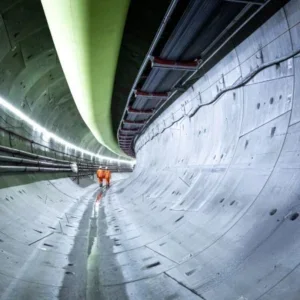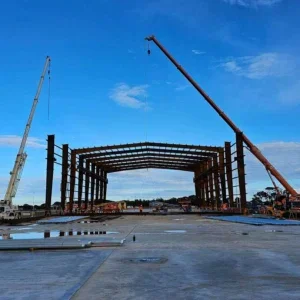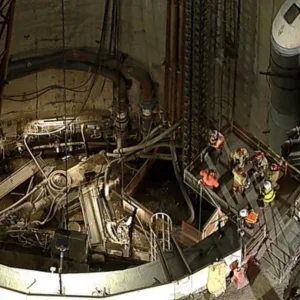Engineers in Belfast are working to repair the ground on Cromac Street after tunnelling disturbed a void beneath the surface causing the ground to sag. Northern Ireland Water has confirmed that the depression is located above a new storm water tunnel, which is part of the Belfast Sewers Project.
Remedial work is now underway and as T&TI went to press a reinforced concrete road base slab had been poured which needed several days to achieve the required strength. After this new black top surfacing will be laid.
The new tunnel under Cromac St was constructed in November 2008 using an EPBM excavating through sandstone overlain by glacial clays and alluvial sand.
Paul Ronicle Project Manager for the project contractor Morgan=Est Farran said: “The ground in Belfast is mostly sandstone which has been eroded due to glaciation. There is a layer of dolomite at the bottom with softer rock at the top which makes for difficult tunnelling situations. We grouted the area to refusal, around 4.5 – 5 bar and have monitored the surface ever since.”
He said that when the tunnel was first mined, the ground initially moved 3mm. “But there was no further movement. In hindsight, I think we took a little more material than we should have,” he said.
Staff from project consultant Atkins have been on site and have been working with NI Water and Morgan Est Farrans to carry out investigations of the soil/rock condition over the tunnel to fully determine the cause of the road depression and establish the extent of the problem. Inspections of the tunnel lining and existing surface monitoring have indicated no further signs of movement or material ingress.
Remedial work will include repairs to an existing local storm water sewer and man holes, infilling and carriageway repair; no other utility services have been affected and unlike a similar incident in Cairo recently, there was no civil disruption or reports of vehicles being consumed by the crater.
The new Belfast Tunnel is unaffected and remains on schedule to open toward the end of the year.







